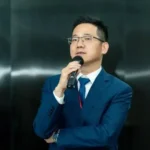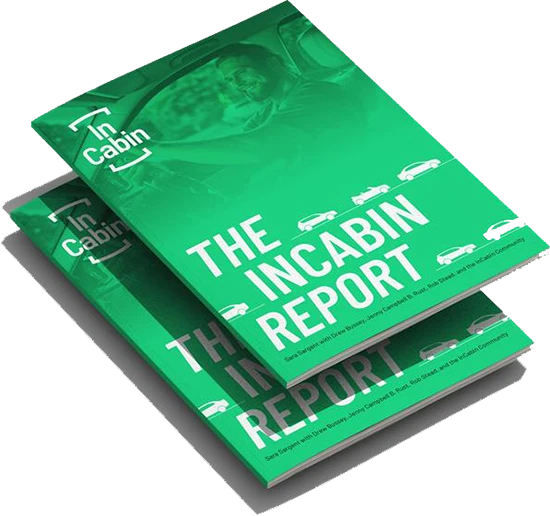VIP Day *by Invitation only: Guest Registration at Intercontinental Hefei Hotel, transport to AOpen Lab
- Tuesday 18th November
- 12:30
- 13:15
- Tuesday 18th November
Arrival at AOpen Lab- Welcome Video Screening of Hefei City and Grand Union of Innovation Service Platform Co., Ltd promotional films
- 13:30
- Tuesday 18th November
Opening Remarks by Host
- 13:40
- Tuesday 18th November
Leadership Speeches
- 13:50
- Tuesday 18th November
Thematic Presentations
- 14:50
- Tuesday 18th November
Coffee Break
- 15:00
- Tuesday 18th November
B2B Business Matching Session
- 16:10
- Tuesday 18th November
Group Photo Session
- 16:30
- Tuesday 18th November
Travel Back to Intercontinental Hotel Hefei
Exhibition Opens for All Pass Holders
- Tuesday 18th November
- 16:30
- 17:00
- Tuesday 18th November
- Exhibition Hall
Welcome Reception in Exhibition Hall for All Pass Holders
- 18:30
- Tuesday 18th November
VIP Dinner *by Invitation Only
Core Pass Check-in and Exhibition Opens
- Wednesday 19th November
- 8:15
- 8:45
- Wednesday 19th November
- Intercontinental Ballroom
Opening Remarks
Opening Remarks
Speaker(s)

- 9:00
- Wednesday 19th November
- Intercontinental Ballroom
Opening Keynote: The Assurance Paradox: Why More Autonomy Needs More Attention
Keynote
Speaker(s)

- 9:30
- Wednesday 19th November
- Intercontinental Ballroom
Keynote Presentation- Next Chapter: AI Defines Cars: Driving Change in Experience, Trust, and Business
Keynote
Speaker(s)

- 10:00
- Wednesday 19th November
- Intercontinental Ballroom
Keynote Presentation – Scalable ADAS Solutions to cover Multiple Vehicle Trim Levels
Keynote
Speaker(s)

- 10:30
- Wednesday 19th November
- Exhibition Hall
Networking Coffee Break
- 11:15
- Wednesday 19th November
- Intercontinental Ballroom
AI + Engineering Accelerating Democratisation of Assisted Driving with Safety
Presentation
Speaker(s)

- 11:15
- Wednesday 19th November
- Baili Room 1
Safe Automated Driving: Requirements and Architectures
Presentation
Speaker(s)

- 11:15
- Wednesday 19th November
- Baili Room 3
Global Automotive Connectivity Outlook – Applications, Regulations, Business Models
Presentation
Speaker(s)

- 11:40
- Wednesday 19th November
- Intercontinental Ballroom
The Next Frontier of Automotive Computing: A Deep Dive into Antora 1000’s Cockpit & Adas-Domain Fusion
Presentation
Speaker(s)

- 11:40
- Wednesday 19th November
- Baili Room 1
Precision in Motion: Latest Trends in Positioning & Attitude Sensors for ADAS and Robotics
Presentation
Speaker(s)

- 11:40
- Wednesday 19th November
- Baili Room 3
From ADAS to Smart Tier 0.5: How China’s Digital Ecosystems are Re-Shaping Intelligent Connectivity
Presentation
Speaker(s)

- 12:05
- Wednesday 19th November
- Intercontinental Ballroom
AI Trends in Cockpit SoC and Zonal Architecture
Presentation
Speaker(s)

- 12:05
- Wednesday 19th November
- Baili Room 1
Going Global: What It Takes for China’s Sensor Companies to Succeed Overseas
Presentation
Speaker(s)

- 12:05
- Wednesday 19th November
- Baili Room 3
SDV Challenges and Solutions
Presentation
Speaker(s)

- 12:30
- Wednesday 19th November
- Exhibition Hall
Networking Lunch Break
- 14:00
- Wednesday 19th November
- Intercontinental Ballroom
Deployment of DMS and OMS in EU – and How that will Affect the Chinese Market
Presentation
Speaker(s)

- 14:00
- Wednesday 19th November
- Baili Room 1
Front Camera Heating Pads – Value, Technology, Complexity
Presentation
Speaker(s)


- 14:00
- Wednesday 19th November
- Baili Room 3
Intelligent Seats: Safety, Comfort, and Robust Data
Presentation
Speaker(s)

- 14:25
- Wednesday 19th November
- Intercontinental Ballroom
Testing Image Quality for Automotive Camera Systems According to IEEE-2020 Standard
Presentation
Speaker(s)

- 14:25
- Wednesday 19th November
- Baili Room 1
Ensuring System Reliability: Managing Environmental Impact of ADAS Hardware
Presentation
Speaker(s)

- 14:25
- Wednesday 19th November
- Baili Room 3
Adaptive System Development for Safety Diversity
Presentation
Speaker(s)

- 14:50
- Wednesday 19th November
- Intercontinental Ballroom
Beyond the Beep: How Bosch’s AI-Powered Sensing is Teaching the Vehicle to Be the Ultimate Co-Pilot
Presentation
Speaker(s)

- 14:50
- Wednesday 19th November
- Baili Room 1
Ultrasonic lens cleaning system for automotive applications
Presentation
Speaker(s)

- 14:50
- Wednesday 19th November
- Baili Room 3
Full-Stack Development of OTA Software
Presentation
Speaker(s)
- 15:15
- Wednesday 19th November
- Exhibition Hall
Networking Coffee Break
- 16:00
- Wednesday 19th November
- Intercontinental Ballroom
Surviving the Shift: ADAS Readiness for China’s Regulation Offensive
Presentation
Moderator

- 16:00
- Wednesday 19th November
- Baili Room 1
AD and Driver Assistance Domain Controllers—Balancing Safety and Speed
Presentation
Speaker(s)

- 16:00
- Wednesday 19th November
- Baili Room 3
Panel Discussion-The Duality of Environmental and Emotional Edge Cases: A Holistic Cabin View
Panel Discussion
Moderator

Speaker(s)


- 16:25
- Wednesday 19th November
- Intercontinental Ballroom
De-Risking NCAP2026: A Scalable MiL–SiL–HiL-Vehicle Pipeline for ADAS Compliance
Presentation
Speaker(s)

- 16:25
- Wednesday 19th November
- Baili Room 1
How CCU Supports AI-defined Vehicles
Presentation
Speaker(s)

- 16:25
- Wednesday 19th November
- Baili Room 3
Continued Panel Discussion- The Duality of Environmental and Emotional Edge Cases: A Holistic Cabin View
Panel Discussion
Moderator

Speaker(s)


- 16:50
- Wednesday 19th November
- Intercontinental Ballroom
Day 1 Closing Keynote: Cross Domain One Chip Integration for Cockpit Plus ADAS Domain Controllers for Budget Car Segments
Keynote
Speaker(s)

- 17:15
- Wednesday 19th November
- Exhibition Hall
Networking Drinks Reception
Check-in and Exhibition Opens
- Thursday 20th November
- 8:30
- 9:00
- Thursday 20th November
- Intercontinental Ballroom
Large-Scale Virtual Scenario Testing for Cognitive AI Driver Behavior
Presentation
Speaker(s)


- 9:00
- Thursday 20th November
- Baili Room 1
Sensing Revolution for Next Generation Automated Driving: Centralized 4D Imaging Radar System
Presentation
Speaker(s)

- 09:00
- Thursday 20th November
- Baili Room 3
Innovative Ultra-Wideband Technology Empowering Reliable In-Cabin Detection
Presentation
Speaker(s)

- 9:25
- Thursday 20th November
- Intercontinental Ballroom
Data Driven Development for ADAS/V2X XIL Testing Solutions
Presentation
Speaker(s)

- 9:25
- Thursday 20th November
- Baili Room 1
Enabling Next-Generation Automotive Radar: Semiconductor Innovation and System Integration
Presentation
Speaker(s)


- 9:25
- Thursday 20th November
- Baili Room 3
Is Your In-Cabin Monitoring System Ready for the Euro NCAP-Assessment? How Can Synthetic Data Help You?
Presentation
Speaker(s)

- 9:50
- Thursday 20th November
- Intercontinental Ballroom
Sensor Virtual Twins: Regulation-Ready Virtual Testing for L2+ ADAS Systems under Emerging Chinese Safety Requirements
Presentation
Speaker(s)

- 9:50
- Thursday 20th November
- Baili Room 1
A Futuristic Vision on a RADAR System for Automated Driving
Presentation
Speaker(s)

- 09:50
- Thursday 20th November
- Baili Room 3
Beyond NCAP: Disruptive In-Cabin Sensing for Advanced Safety and User Experience
Presentation
Speaker(s)

- 10:15
- Thursday 20th November
- Intercontinental Ballroom
From Prototype to Production: In-Cabin Sensor Testing for Safer, Smarter Vehicles
Presentation
Speaker(s)

- 10:15
- Thursday 20th November
- Baili Room 1
An 8T8R Radar System using SoC Cascading Technology
Presentation
Speaker(s)

- 10:15
- Thursday 20th November
- Baili Room 3
From Vital Signs to Vehicle Intelligence (A Sensor-Agnostic Path to Predictive Safety)
Presentation
Speaker(s)

- 10:40
- Thursday 20th November
- Exhibition Hall
Networking Coffee Break
- 11:30
- Thursday 20th November
- Intercontinental Ballroom
Safe Automated Driving: Requirements and Architectures
Presentation
Speaker(s)

- 11:30
- Thursday 20th November
- Baili Room 1
NextGen AI Ultrasonic Sensing Solution – Enhancing ADAS in China
Presentation
Speaker(s)

- 11:30
- Thursday 20th November
- Baili Room 3
Development Trends of In-Vehicle Display in the Chinese Market
Presentation
Speaker(s)

- 11:55
- Thursday 20th November
- Intercontinental Ballroom
From handcrafted to software-defined to AI-defined cars. What has automotive industry missed?
Presentation
Speaker(s)

- 11:55
- Thursday 20th November
- Baili Room 1
Why AK 3.0 Matters: Next-Generation ASSP Strategy
Presentation
Speaker(s)


- 11:55
- Thursday 20th November
- Baili Room 3
PGU Optical Path and Outlooks
Presentation
Speaker(s)

- 12:20
- Thursday 20th November
- Intercontinental Ballroom
From the Ground Up: Intelligent Tyres for Intelligent Vehicles
Presentation
Speaker(s)

- 12:20
- Thursday 20th November
- Baili Room 1
Empowering Safer Mobility – Scalable ADAS Solutions from Radar to Central Compute
Presentation
Speaker(s)

- 12:20
- Thursday 20th November
- Baili Room 3
Quieting the Cabin: Advances and Challenges in Automotive Active Noise Control
Presentation
Speaker(s)

- 12:45
- Thursday 20th November
- Exhibition Hall
Networking Lunch Break
- 14:00
- Thursday 20th November
- Intercontinental Ballroom
Keynote: Scaling for Autonomy: Engineering the Future of Self-Driving Systems
Keynote
Speaker(s)

- 14:30
- Thursday 20th November
- Intercontinental Ballroom
Closing Keynote
Keynote
Speaker(s)

- 15:00
- Thursday 20th November
- Intercontinental Ballroom
Closing Remarks
Closing Remarks
Speaker(s)

Andreas Dirring, CSO/CFO, cogniBIT and Kangkang Zhou, Head of ADAS Simulation Team, IAV
This sharing focuses on the IAV & cogniBIT advanced traffic flow simulation solution, with the core goal of verifying the cognitive AI driver model through a series of steps. Firstly, it processes the real driving data, converts it into the specified format, and mines the model parameters. Then, it selects key scenarios to support simulation. Subsequently, it converts and analyzes the simulation data after integrating these AI drivers, compares and verifies the authenticity of drivers’ macro behaviors, and iteratively optimizes the parameters. Finally, it delivers reports showing the high simulation fidelity.
Andreas Nebeling, VP Global Business Development, Elmos
Elmos Semiconductor, a global leader with over 25 years of expertise in automotive ultrasonic sensing, continues to set industry benchmarks through innovation, performance, and market-driven design. With a strong focus on the Chinese automotive sector, Elmos offers tailored solutions that meet regional requirements while maintaining global excellence. Our proven 524.17 DSI3 product has long dominated the AK2 market in Asia. Now, its successor the 524.20 delivers greater flexibility, cost-efficiency, and soon, a raw data interface enabling advanced AI-based perception. Validated by leading OEMs and Tier-1 suppliers worldwide, this platform empowers next-generation ADAS and autonomous parking systems with unparalleled precision and reliability. The Elmos NextGen Ultrasonic Solution integrates advanced signal processing, high-speed digital communication, efficient power management, and robust cybersecurity into a single platform. Featuring built-in AI-powered Height Classification and ultra near-field measurement algorithms, it is purpose-designed for autonomous parking offering cost-optimized architecture, localization flexibility, and seamless integration for both premium and mass-market vehicles. Looking ahead, Elmos is preparing to introduce the DSI4 standard, redefining communication capabilities and setting a new benchmark in ultrasonic sensing for the autonomous era.
Andrew Klein, CEO, Brighter Signals
Details TBA
Mark Zellerhoff, Head of ADAS, BMW
Details TBA
Eugene Wang, General Manager, Semidrive
Details TBA
Jared Yang, Director of Technology, Brand and Planning, Great Wall
China’s digital development is driving AI-enabled automotive experiences (multimodal interaction). From focusing on technical functionality to satisfying user emotional value, technology fosters security and trust, and new technological architectures enable the exploration of new business models. Also, the differences between Chinese and international users will be briefly analyzed.
Javier Salado, Technical Product Manager, Anyverse
InCabin monitoring systems require more and more functions every year. They become more complex and need to use more sophisticated and powerful sensors to comply with regulations and the beloved user ratings like Euro NCAP. How can you adapt to this ever-changing landscape making sure that the systems, not only work, but that they are robust enough to corner cases that yield false positives that reduce user acceptance? Learn how we can leverage the latest advancements in generative AI to complement physically based synthetic data to have full coverage of test cases with enough variability to make systems close to 100% reliable.
Wang Yanggang, SVP, HIWAY
TBC
Martin Chi, CEO, BlueSmart Technology
The automotive industry is undergoing a profound transformation, shifting from handcrafted vehicles to software-defined cars and now moving rapidly toward AI-defined mobility. While software-defined architectures (SDV) have enabled modularity, OTA updates, and continuous feature evolution, the transition has not been seamless. OEMs underestimated the complexity of scalable software integration, zonal E/E architectures, and the need for robust cloud-to-car ecosystems. Legacy development models, siloed supplier strategies, and slow organizational adaptation have often delayed innovation. Now, as AI-native vehicles emerge—with perception-driven ADAS, predictive maintenance, personalized in-cabin experiences, and self-learning digital twins—the gap between traditional OEMs and tech-driven players is widening. To remain competitive, the industry must embrace data-centric engineering, end-to-end software platforms, and AI-first development pipelines. This presentation explores the lessons missed, strategic shifts required, and how AI-defined architectures will fundamentally reshape vehicle design, business models, and the global automotive value chain.
Kevin Li, Director of China Market Research, TechInsights
Details TBA
Marek Hustava, Product Architect, Design Center Brno, onsemi
Details TBA
Jinfang (Jennifer) Jiang, President, iMotion
Details TBA
Cong Liu, Global Director of Sales & Operation, Seyond
Details TBA
Bill Russo, CEO, Automobility
China is leading the world in the rapid deployment of advanced driver assistance systems (ADAS) and intelligent connected vehicles. This transformation is powered not only by traditional suppliers but also by digital ecosystems that are increasingly shaping the mobility landscape. These ecosystems—rooted in data platforms, AI, and connectivity—are driving the emergence of a new “Smart Tier 0.5” supply chain, bridging the gap between automakers and end-users. In this presentation, Bill Russo will share insights and examples from the ADAS Guide, illustrating how China’s unique innovation environment accelerates the transition toward intelligent connectivity. He will highlight the competitive dynamics, implications for global suppliers, and the strategic role of cross-industry collaboration in defining the next era of in-cabin intelligence.
Dr. Fu Lizheng, Senior Director of Field Engineering, Wind River
SDV and Autonomous Driving are the trend of automotive industry. They are facing many challenges, such as software complexity, security, mission critical and safety, software life cycle management, etc. This presentation will address these challenges, provide some solutions.
Harvey Lv, VP Strategy & AD/ADAS Product Planning and Marketing, Horizion Robotics
China has become the best fitness centre for smart driving. We will talk about what’s the key factors to win in this market and how to accelerate the development and deployment in smart driving. The unique way of Horizon Robotics’ software and hardware co-optimization best practice shows the way from L2+ to L4/5. We will also show our current progress and products about smart driving and the key technology behind it.
Kai Yang, System Engineer, Calterah
High-resolution automotive radar with 6T8R or 8T8R is popular for OEMs in China due to its high performance and acceptable cost. Traditional way of building this kind of radar device is cascading two transceiver chips together and connecting them onto a strong radar MCU. Some new solution directly uses a newly designed 8T8R transceiver to replace a cascading method. We implement the system using a different way: directly cascade two radar SoC chips together. Besides cascading the LO signal, we connect two SoC chips by a SerDes interface. So, each SoC can access the other one using memory map method. All the resources of two chips can be utilized for processing. Some jobs are done by distributed processing, and the others are done by gathering required data in a single chip through SerDes transmission. In the talk, we will give the system architecture, an example of signal processing flow, the benefits of this kind of system. And we will give test results under different scenarios which are collected from some OEMs to show the performance of this system.
Michael Baus, Director Advanced Electrodynamics (CR/AEL), Bosch
The RADAR sensors are today the most important complement to cameras for assisted and automated driving. Their active measurement principle allows direct 3D measurements with additional velocities. Combined with high robustness to weather influences makes them the key redundant modality each safety system is required to have. However classical RADAR sensors with their sparse point clouds are not as performant as LIDAR sensors. Imagine a network of cognitive digital broadband RADARs with hundreds of channels with large apertures spanning around the entire vehicle, cooperatively combining all channels of spectrum data at a central brain with modern AI methods – such a RADAR system would outperform a LIDAR system. Despite such an ultimate RADAR setup will take its time to get into the vehicles in all parts, it is showing the different technology paths industry is heading to. The talk will introduce the different technologies and show their benefits and the open challenges to be solved before realizing this ultimate RADAR vision.
Martin Lange, ADAS Expert, Volkswagen Group & Rembert Schulze Wehninck, Managing Director, K.L. Kaschier- und Laminier GmbH
Details TBA
Richi Wang, Head of ECARX Central Computing R&D Center, ECARX
Details TBA
Peipei Zhao, President of North America, RoboSense
As Chinese sensor companies expand globally, success requires more than cost or specs—it demands trust, compliance, and strategic alignment. Drawing from his experience leading RoboSense’s LiDAR production program with Lucid Motors in the U.S., Peipei Zhao will explore four critical challenges Chinese firms face: system validation, regulatory hurdles, cultural differences, and go-to-market strategy. This session also offers guidance for global OEMs and Tier 1s: how to evaluate and collaborate with fast-scaling Chinese tech suppliers, and how to align processes across different engineering cultures. Attendees will gain a real-world framework for navigating cross-border collaboration in the next decade of global sensing innovation.
Sebastian Osswald, Director, Business Development, Momenta.AI
TBC
Shanning Zhang, Tire Insights & Business Development Manager, Goodyear
TBC
Tong Wu, Market Manager - Mobility, Sensirion AG
TBC
Wenxiu Yu, Product Marketing Engineer, Calterah
With the rapid advancement of automotive intelligence and connectivity, ultra-wideband (UWB) technology has evolved from positioning tools to core components that enable automotive intelligent sensing and secure interaction. Calterah’s first-generation UWB SoC series, Dubhe, has come into being. We have leveraged our over ten years of radar expertise to enhance the UWB radar capabilities of Dubhe, enabling it to be the World’s first 2T4R automotive UWB SoCs complaint with the latest standard IEEE 802.15.4ab. Combining outstanding RF performance, strong penetration capability and nanosecond-level pulse’s anti-interference performance, the Dubhe series of UWB SoCs will be a tech disruptor for in-cabin detection and thrive in current competitive and fast-moving automotive market. This keynote will elaborate on:
- The trend of UWB development in automotive applications.
- Key features and innovations of Calterah UWB
- SoC series—Dubhe
- Explainer videos demonstrating how Dubhe can empower in-cabin detection
Xuyang Li, CEO, Sinpro
TBC
Yinyue Feng, Leader of ADAS Solution, Architecture and Safety, Volkswagen China Technology Company
TBC
Yuichi Motohashi, Global Segment Lead Camera/LiDAR/SerDes/Display, GlobalFoundries and Ofer Raz, Regional (Asia) Field Application Manager, ARBE
With the automotive industry’s rapid shift towards higher autonomy and enhanced safety, radar sensing remains crucial for reliable perception in all weather and lighting conditions. This collaborative presentation by GlobalFoundries and Arbe will delve into the synergy between semiconductor innovations and advanced radar system design. We will highlight how our joint efforts on the GlobalFoundries platform are pushing the boundaries of automotive radar technology. The presentation will cover semiconductor technology trends shaping the future of automotive sensing, the evolution of mainstream sensor technologies, and how these demands are driving innovation at the foundry level. Arbe will provide a deep technical dive into their latest automotive radar sensor, showcasing architectural choices, calibration and validation methodologies, and how the radar system addresses challenges such as mutual interference mitigation, ghost target suppression, and environmental robustness.
Zhenkai Tan, Head of ADAS Global Function & Local OEM Coop, Volkswagen China Technology Company
Regulation changes in China set ADAS Industry under big pressure – what does it mean?
Gary Overett, Kognic
TBC
2025 Key Topics
OMS for Advanced Safety Features
This track will explore how OMS solutions enhance accident prevention, driver and passenger protection, and regulatory compliance.
HMI Design for Enhanced UX
This session will focus on ways to create seamless, intuitive interactions between occupants and vehicles.
Connectivity & Integrated Systems in the Software-Defined Vehicle
Presentations in this stream will examine the ways in which seamless integration between in-cabin technologies, cloud services, and vehicle systems is transforming modern mobility.


